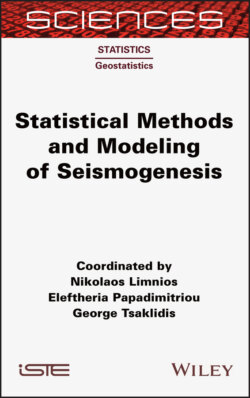Читать книгу Statistical Methods and Modeling of Seismogenesis - Eleftheria Papadimitriou - Страница 28
2.2.6. Comparisons among simulators
ОглавлениеThe various methods and models adopted in different simulator algorithms have led to several studies comparing the results obtained by these simulators. One which focused on earthquake simulators dealt with this subject (Tullis 2012). In this volume, two papers (Tullis et al. 2012a,b) were specifically devoted to the comparison of the four main simulators developed in California. Moreover, Field (2015) carried out an in-depth analysis of the performance of three simulators, namely, ALLCAL, RSQSim and ViscoSim. He focused in particular on the recurrence interval distributions for each simulator (see Figure 2.2). In the below figure, we also added the probability density functions of the Brownian Passage Time (BPT) renewal model, computed for the respective minimum, mean and maximum recurrence time Tr and the coefficient of variation Cν obtained from the simulated distributions (Mosca et al. 2012). More recently, Wilson et al. (2017) addressed the problem of verifying earthquake simulators with observed data and discussed the performances of ALLCAL, Virtual California, ViscoSim and RSQSim.
Figure 2.2. Recurrence-time distributions from three different physics-based earthquake simulators (as labeled) at the Pitman Canon paleoseismic site on the southern San Andreas Fault. This analysis only considers ruptures that have an area greater than the square of the average down-dip width. The maximum-likelihood analysis of paleoseismic data gives an observed mean recurrence interval of 173 years (with 95% confidence bounds of 106–284 years) (based on Field 2015). The three colored lines depict the BPT probability density functions computed for the respective minimum, mean and maximum recurrence time Tr and the coefficient of variation Cν obtained from the simulated distributions. For a color version of this figure, see www.iste.co.uk/limnios/statistical.zip
